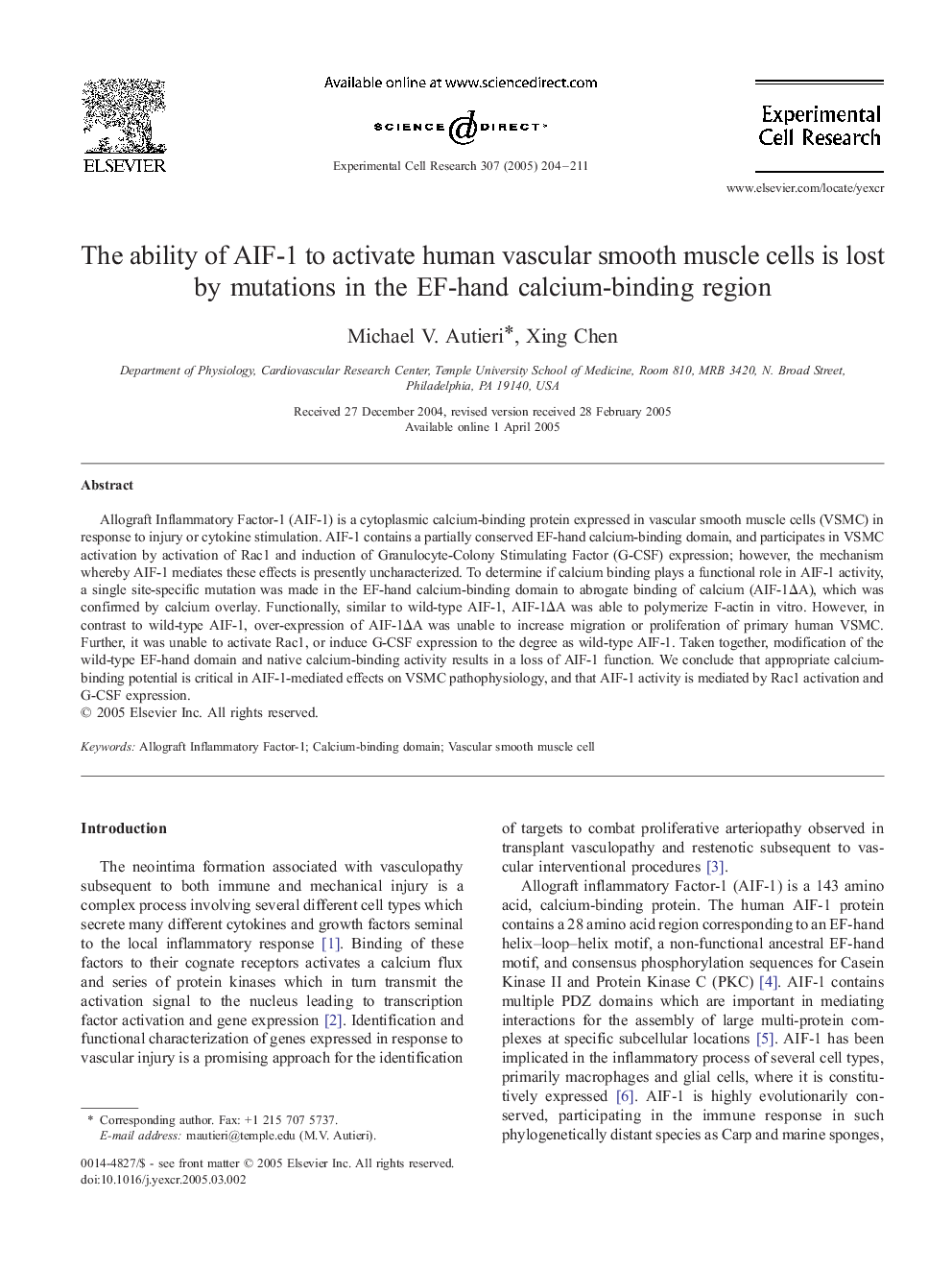| Article ID | Journal | Published Year | Pages | File Type |
|---|---|---|---|---|
| 10905209 | Experimental Cell Research | 2005 | 8 Pages |
Abstract
Allograft Inflammatory Factor-1 (AIF-1) is a cytoplasmic calcium-binding protein expressed in vascular smooth muscle cells (VSMC) in response to injury or cytokine stimulation. AIF-1 contains a partially conserved EF-hand calcium-binding domain, and participates in VSMC activation by activation of Rac1 and induction of Granulocyte-Colony Stimulating Factor (G-CSF) expression; however, the mechanism whereby AIF-1 mediates these effects is presently uncharacterized. To determine if calcium binding plays a functional role in AIF-1 activity, a single site-specific mutation was made in the EF-hand calcium-binding domain to abrogate binding of calcium (AIF-1ÎA), which was confirmed by calcium overlay. Functionally, similar to wild-type AIF-1, AIF-1ÎA was able to polymerize F-actin in vitro. However, in contrast to wild-type AIF-1, over-expression of AIF-1ÎA was unable to increase migration or proliferation of primary human VSMC. Further, it was unable to activate Rac1, or induce G-CSF expression to the degree as wild-type AIF-1. Taken together, modification of the wild-type EF-hand domain and native calcium-binding activity results in a loss of AIF-1 function. We conclude that appropriate calcium-binding potential is critical in AIF-1-mediated effects on VSMC pathophysiology, and that AIF-1 activity is mediated by Rac1 activation and G-CSF expression.
Related Topics
Life Sciences
Biochemistry, Genetics and Molecular Biology
Cancer Research
Authors
Michael V. Autieri, Xing Chen,
